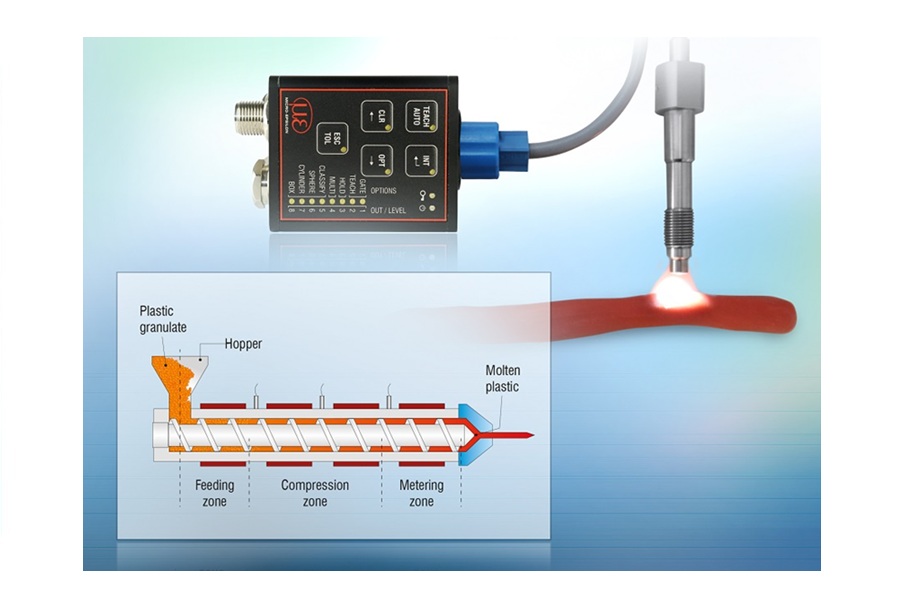11/08/2025 Micro-Epsilon UK Ltd
In the production of solid-to-viscous materials such as gelatin, syrup and plastic, the mass is continuously compressed under pressure in extruders and extruded as a strand. During this process, the material must not heat up too much, otherwise it will burn, which would result in undesirable discolouration. For this reason, colour sensors from Micro-Epsilon are used to precisely measure the colour of the extruded materials, therefore maximising product quality.
The extruder head environment is very demanding for sensor integration with pressures up to 200 bar and temperatures in the form of hot material up to 250°C. Specially developed fibre optic sensors are used in this situation and are directly integrated in the extruder head. The colorSENSOR CFS from Micro-Epsilon is mounted directly in the extruder using a ½ inch-20UNF fit or M12 fit. The sensors are pressure-resistant up to 200 bar and temperature-resistant up to 250°C. Repeatability is also high at ?E < 0.3.
When extruding transparent materials such as gelatin, the colour measurement is carried out in transmission using a CFS3-S-T250 transmission sensor, while opaque materials such as plastic are measured using the reflection method with a CFS4-S-T250 reflection sensor. The measurement takes place on the inside wall of the extruder, at up to 200 bar pressure and at temperatures up to 250°C. The measurement results are then used for process control.
Powerful controller
The inline colour measurement requires a separate controller. The recently launched colorSENSOR CFO250 controller from Micro-Epsilon offers a significantly faster raw measurement data output up to 500 Hz. With a wide range of sensor heads to choose from, the CFO250 is particularly suitable for high speed processes such as the monitoring of mixing processes (granulates and powders) and in-quality inspection in filling plants.
The colorSENSOR CFO250 true colour controller performs colour evaluations at very high speeds (measuring rates) of up to 30 kHz. In the process, taught colours are compared with the current measurement value, controllers are internally evaluated (colour detected/not detected) and output via the digital switching outputs. In addition to the evaluated result, the unevaluated raw data can also be provided in Lab or XYZ colour spaces at up to 500 Hz via UDP, RS232 or USB interface. Using a Micro-Epsilon-specific simplified binary 3-byte protocol, the data can be transferred directly to a PLC for further processing.
The controller’s web interface allows teach-in of 254 colour groups with 320 colours in total. One function automatically adapts the illumination, averaging and signal amplification to the current measurement situation. Micro-Epsilon’s freely downloadable sensorTOOL software can be used to make recordings up to 500 Hz using the CFO250.
Request FREE information from the supplier on the products in this article
Login or Register
Process and Control Today are not responsible for the content of submitted or externally produced articles and images. Click here to email us about any errors or omissions contained within this article.
